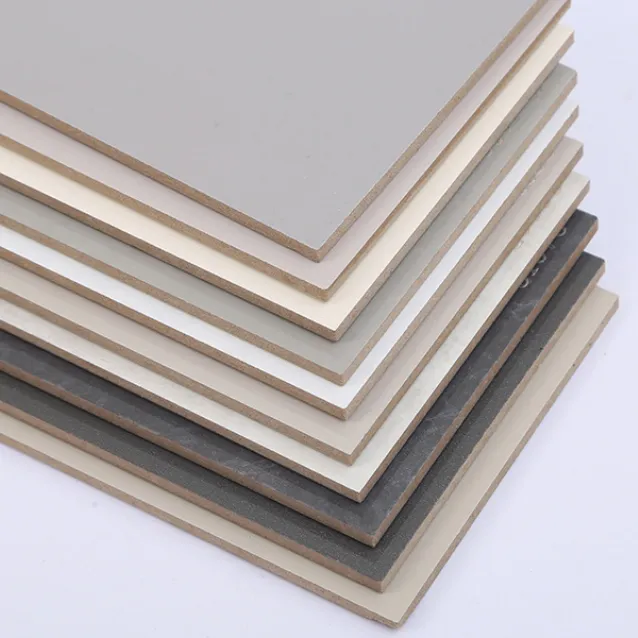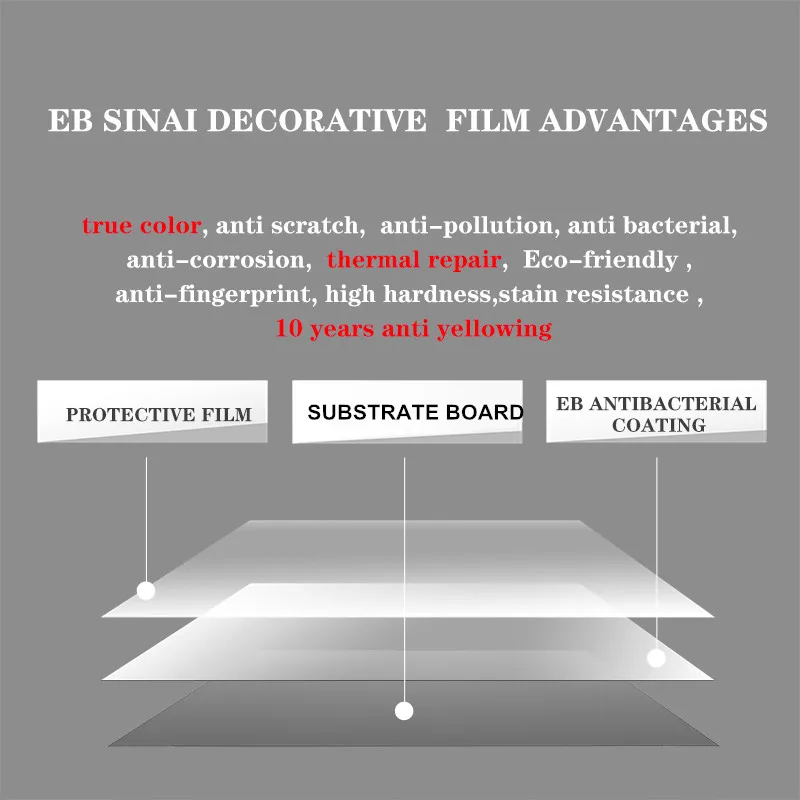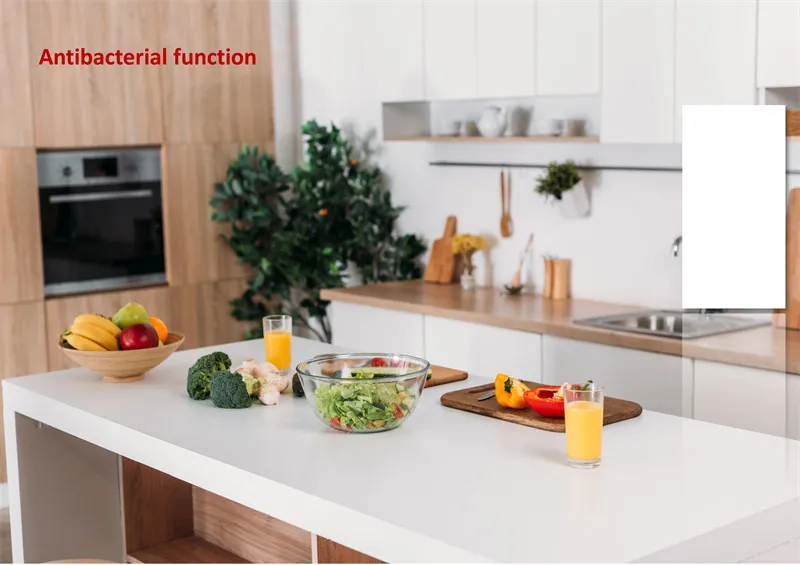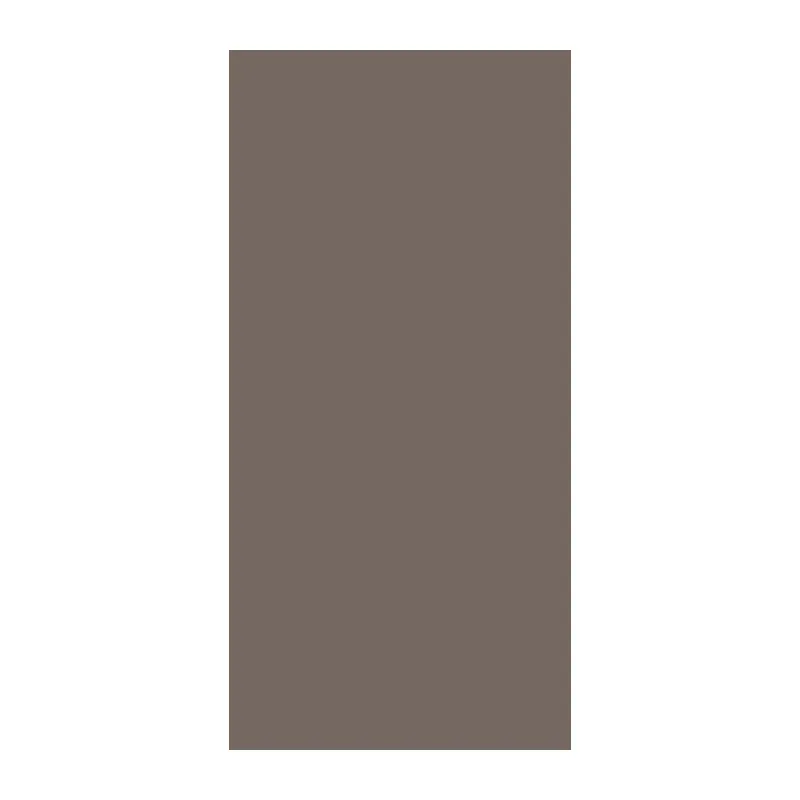
What is the difference between MDF board and HMR board?
2024-07-24 15:30
With the wide application of man-made panels in the construction, furniture and decoration industries, MDF (medium density fiberboard) and HMR (high moisture-proof board) have become two materials that have attracted much attention in the market due to their respective characteristics and uses.
Although they are somewhat similar in appearance and some features, there are actually significant differences. This article will explore the differences between these two types of boards in detail to help readers better understand and choose the appropriate material.

What is MDF board?
MDF (Medium Density Fiberboard) is a man-made board made of wood fibers and resin pressed by high temperature and high pressure. Due to its uniform structure, flat surface, easy processing and affordable price, MDF boards are widely used in furniture manufacturing, interior decoration and construction fields.
What is HMR board?
HMR (High Moisture Resistant, high moisture-proof board) board is an improved MDF board specially designed for high humidity environments. By adding moisture-proof agents and improving the adhesive formula during the manufacturing process, the moisture-proof performance of HMR boards has been significantly improved, making it particularly suitable for environments with heavy humidity such as kitchens and bathrooms.

What is the difference between MDF (medium density fiber) board and HMR (high moisture resistant board) board?
The main differences between MDF boards and HMR boards: moisture-proof performance, manufacturing process, uses and application scenarios, price and environmental performance.
1. Moisture-proof performance:
● MDF board: The moisture-proof performance of ordinary MDF board is relatively poor, and it is easy to absorb moisture, expand and deform. Therefore, when using MDF boards in high-humidity environments, additional waterproofing is required.
● HMR board: Moisture-proof agent is added to HMR board during the production process, giving it excellent moisture-proof performance. Even in high-humidity environments, HMR boards remain stable and are not prone to hygroscopic expansion and deformation. Therefore, HMR boards are more suitable for use in kitchens, bathrooms and other places that need to be moisture-proof.
2. Manufacturing process:
● MDF board: The manufacturing process of MDF board is relatively simple. It mainly mixes wood fiber and resin and then presses it into a board through high temperature and high pressure. Due to its mature technology and low production cost, the market supply is sufficient.
● HMR board: The manufacturing process of HMR board is more complicated. It requires adding moisture-proof agent to the wood fiber and resin mixture, and using a special adhesive formula to improve the moisture-proof performance of the board. These additional process steps make HMR panels more expensive to produce.
3. Purpose and application scenarios:
● MDF board: Due to its good processing performance and surface quality, MDF board is widely used in furniture manufacturing, interior decoration and building materials. For example, cabinets, bookshelves, wall decorative panels and door panels are all common applications of MDF boards.
● HMR board: Due to its excellent moisture-proof performance, HMR board is mainly used in high-humidity environments, such as kitchen countertops, bathroom cabinets, laundry room furniture and decorative materials. In addition, HMR boards are also suitable as building materials in humid areas.
4. Price:
● MDF board: Due to the simple manufacturing process and easy availability of raw materials, the market price of MDF board is relatively low. According to market research, the price of ordinary MDF boards ranges from approximately US$400 to US$600 per cubic meter.
● HMR board: Due to the complex production process and the addition of moisture-proof agent, the cost of HMR board is relatively high, and the market price is relatively expensive. The price of HMR boards is usually 20% to 30% higher than ordinary MDF boards.
5. Environmental performance:
● MDF board: In the production process of modern MDF board, the adhesives and resins used have been continuously improved to reduce the emission of harmful substances. However, ordinary MDF boards may release more harmful substances such as formaldehyde in humid environments.
● HMR board: HMR board also uses environmentally friendly adhesives during the production process, and due to its superior moisture-proof performance, it can better inhibit the release of harmful substances in humid environments. Therefore, HMR boards have relatively better environmental performance.

What are the advantages and disadvantages of MDF board and HMR board?
★ Advantages of MDF board:
1. Flat and smooth surface: suitable for surface treatment such as painting and veneer.
2. Easy to process: can be cut, drilled, and milled into various complex shapes.
3. Strength and stability: It has high strength and stability and is not easy to deform.
4. Moderate price: Compared with other high-end boards, the price is relatively affordable.
★ Disadvantages of MDF board:
1. Poor moisture-proof performance: It is easy to absorb moisture, expand and deform in a high-humidity environment.
2. Low impact resistance: easily damaged by impact.
3. Heavier weight: higher density, more laborious to transport and install.
✮ Advantages of HMR board:
1. Excellent moisture-proof performance: suitable for use in high-humidity environments to prevent moisture absorption, expansion and deformation.
2. Good environmental performance: it can better inhibit the release of harmful substances in humid environments.
3. Versatility: In addition to moisture-proof performance, other processing properties are similar to MDF boards.
✮ Disadvantages of HMR boards:
1. Higher price: Due to the complex production process, the market price is relatively high.
2. High processing requirements: Due to the addition of moisture-proof agent, there may be higher requirements for processing equipment and technology.

Advice on choosing MDF board and HMR board
1. Ordinary environment: If the humidity of the environment is low and the requirements for moisture-proof performance are not high, you can choose MDF board. Its good processing properties and flat surface are suitable for use in a variety of furniture and interior decoration.
2. High humidity environment: If the environment is used in places with high humidity, such as kitchens, bathrooms, etc., it is recommended to choose HMR boards. Its excellent moisture-proof performance ensures that the board remains stable in humid environments and extends its service life.
3. Budget considerations: When the budget is limited, you can choose a more cost-effective MDF board according to specific needs. If you have sufficient budget and have high requirements for moisture-proof performance, HMR boards are a better choice.
In conclusion
To sum up, MDF board and HMR board are two important materials in artificial boards, each with unique advantages and applicable scenarios. MDF boards are widely used in furniture manufacturing and interior decoration due to their good processing properties and price advantages, while HMR boards are ideal for high-humidity environments due to their excellent moisture-proof properties.








